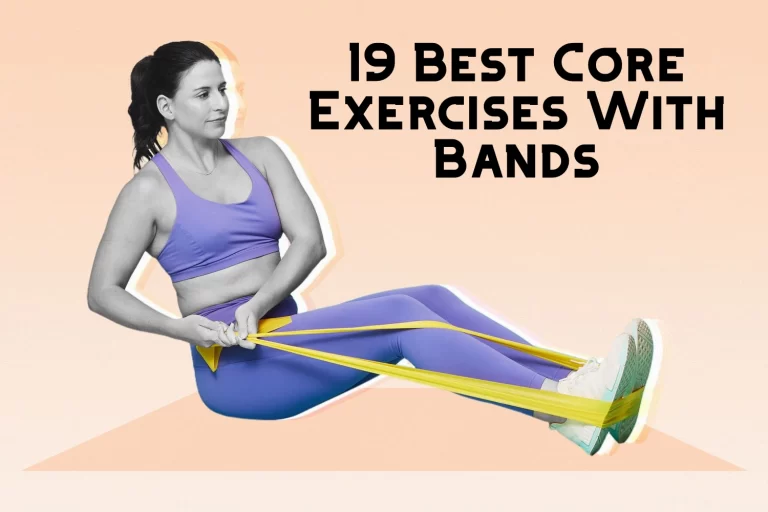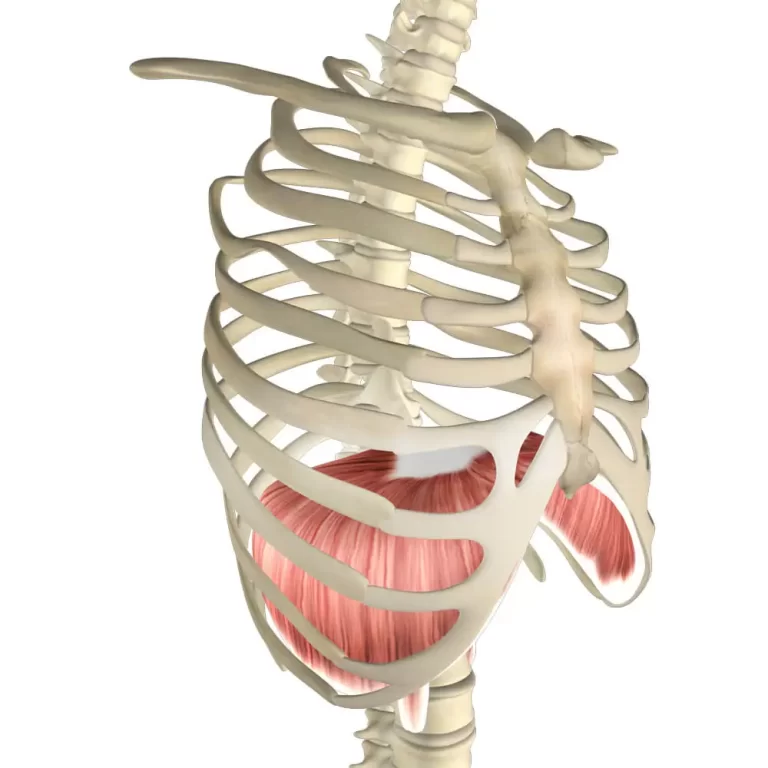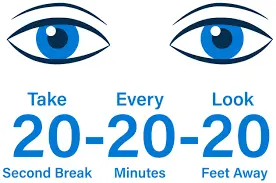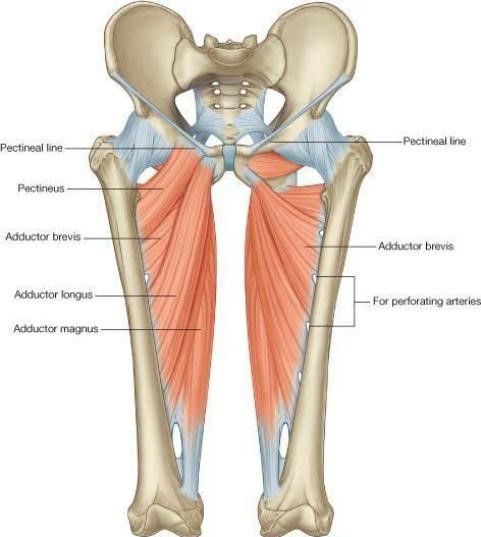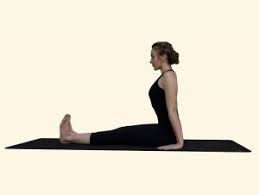18 Best Deltoid Exercises With Dumbbells
Table of Contents
What are the deltoid muscles?
The highest point of each shoulder joint is covered by a big muscle called the deltoid. The anterior, middle, and posterior deltoids are the three components that make up the deltoids. These fibers give the upper arms their characteristic spherical form. Beyond aesthetics, though, they are essential to several upper-body movements.
You may lessen your chance of shoulder injuries and increase the stability of your shoulder by focusing on and strengthening these muscles. This is crucial, particularly if you do strength training or play sports that require a lot of shoulder movement.
Exercises for the deltoid muscle can help you develop better posture, stronger upper body muscles, and an athletic, sculpted appearance. Making your bed, lifting a child or object off the ground, and carrying groceries are just a few of the daily tasks that can be made easier by having strong deltoids!
Deltoid Exercises With Dumbbells
Reverse fly
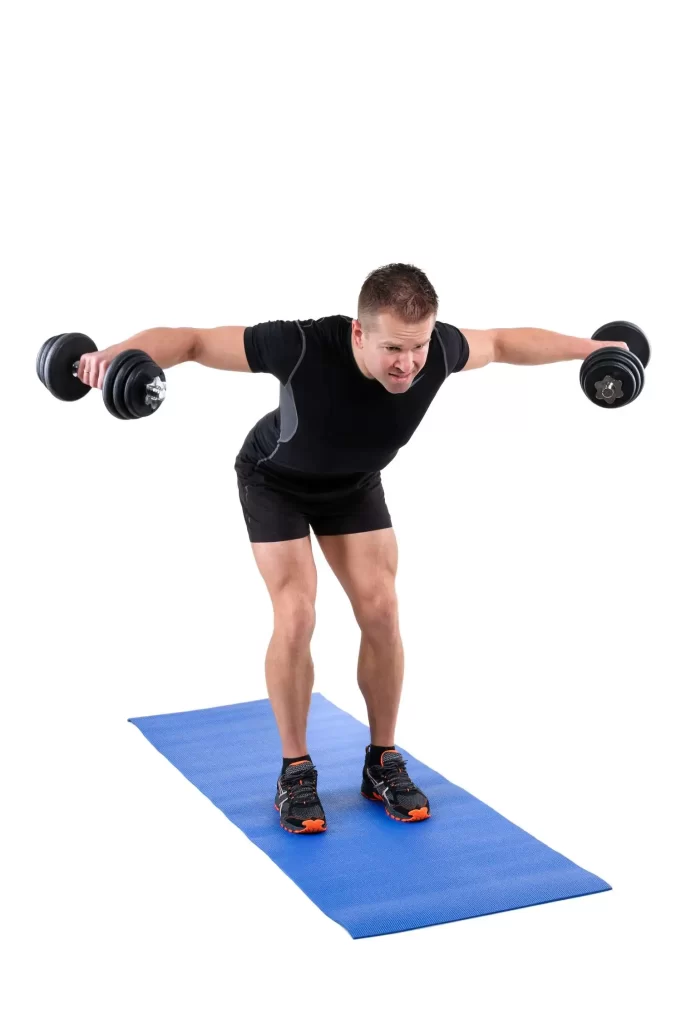
Steps To Follow:
- Hold a dumbbell in each hand and take a hip-distance stance.
- Lean your torso forward diagonally while bending forward at the hips.
- Reach your arms towards the floor. Raise your arms to shoulder height and extend them to the sides.
- Squeeze your shoulder blades together, then return to your starting posture by releasing them.
- 10 repetitions should be made.
Alligator mouth flies
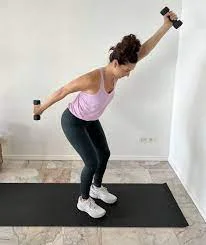
Steps To Follow:
- Holding a dumbbell in each hand, take a standing position with your feet hip-distance apart.
- Bend forward at the hips and slightly bend the knees.
- Draw in your abs. Reach your right arm straight up in front of you till it is in line with your right ear while keeping your other arms hanging down.
- Next, activate your left tricep by reaching your left arm back behind you.
- Imagine using both arms to form a single, diagonal, straight line.
- Go back to where you were before.
- Reaching out with your left arm forward and your right arm back, switch it up.
- For 10 repetitions on each side, keep alternating.
Dumbbell shoulder press
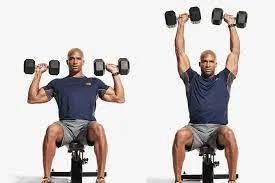
Steps To Follow:
- Place your feet hip-distance apart as you stand.
- Raise a dumbbell with both hands. Raise the dumbbells until your arms are shoulder height, palm facing away from you, like a goal post.
- This is the appropriate place for you to begin.
- Push the dumbbells upward while using your core to stay stable during each repeat.
- Return to the starting position slowly.
- 10 repetitions should be made.
Front raise
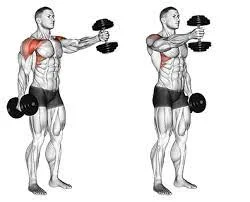
Steps To Follow:
- Keep your feet hip-width apart.
- Raise a dumbbell with both hands.
- To keep yourself stable, contract your core.
- Raise your arms straight up and out in front of you until they are shoulder height, with your palms facing backward.
- Return to the starting position slowly.
- 10 repetitions should be made.
Lateral raise
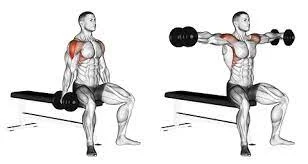
Steps To Follow:
- Keep your feet hip-width apart.
- Raise a dumbbell with each hand.
- With your palms facing your body, let your arms hang at your sides.
- Next, raise your arms to shoulder height and extend them straight out to the sides, away from your body.
- Return to the starting position slowly.
- 10 repetitions should be made.
Neutral grip shoulder press
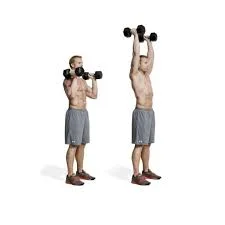
Steps To Follow:
- Keep your feet hip-width apart.
- Raise a dumbbell with both hands.
- Raise the dumbbells to your ears’ level, bend your elbows, and bring your hands inward towards one another (your head facing inward).
- Raise your arms above your head so that your elbows are straight.
- Return to the starting position slowly.
- 10 repetitions should be made.
Neutral grip front raise
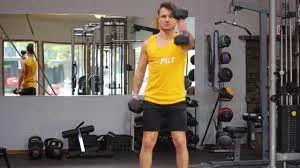
Steps To Follow:
- Allow your arms to dangle loosely at your sides while holding a dumbbell in each hand.
- Maintain a straight back while tensing your abdominal muscles.
- Raise the weights until your arms are straight out in front of you at shoulder height, with your palms facing each other.
- Return the weights to their starting positions gradually.
- 10 repetitions should be made.
Angled shoulder press
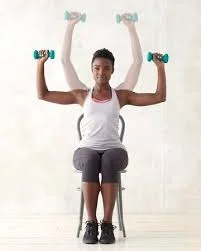
Steps To Follow:
- Keep your feet hip-width apart.
- Raise a dumbbell with both hands.
- With your elbows pulled into your sides, raise the dumbbells to shoulder height and rotate them outward at a 45-degree angle.
- Raise your arms above your head so that your elbows are straight.
- Return to the starting position slowly.
- 10 repetitions should be made.
Y-raises

Steps To Follow:
- Keep your feet hip-width apart.
- Raise a dumbbell with both hands.
- Let your arms naturally drop to your sides.
- Make a 45-degree angle with your palms facing out to the sides.
- Form a broad “Y” with your arms raised and out at your sides till shoulder height, with a small bend in your elbows.
- Keep your hands facing away from you during every motion.
- Return to the starting position slowly.
- 10 repetitions should be performed.
Plank up-downs

Steps To Follow:
- The exercise program works your entire body by hitting a variety of muscles in addition to your shoulders and core!
- With your hands, begin in a complete plank.
- Throughout this exercise, keep your hips from swinging by using your core.
- Lower your left elbow slowly to the ground.
- Next, flex your elbow to the right.
- Right now you ought to be in an elbow plank.
- To get back to a full plank posture, place your left hand on the mat first, followed by your right.
- 10 repetitions should be performed.
Pushups
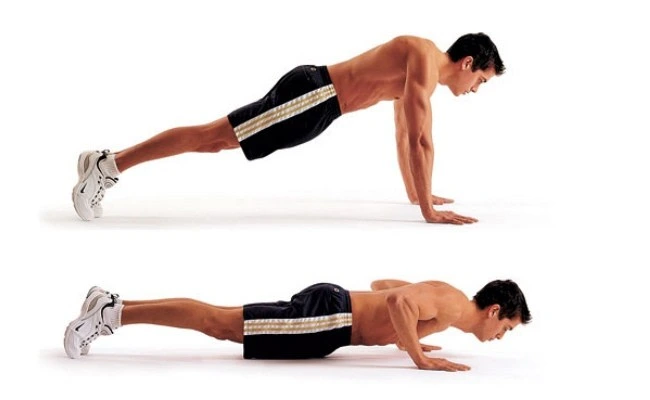
Steps To Follow:
- Place your hands on the floor beneath your shoulders and begin in the full plank posture.
- As you descend your body towards the floor, contract your core and extend your elbows out to the sides.
- Regaining your plank position requires pushing through your hands.
- Repeat 10 times.
Single arm cross body front raise
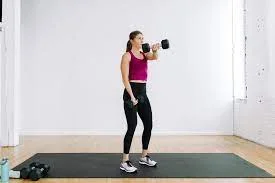
Steps To Follow:
- Position your feet hip-width apart as you stand.
- Dumbbells should be held in each hand, palms away from the body.
- Raise your arm straight up and across your body, starting with your right hand, while maintaining an engaged core.
- Return to the starting position slowly.
- Use your left arm to perform.
- Repeat 10 repetitions on each side, continuing to alternate.
Single-arm bent-over row
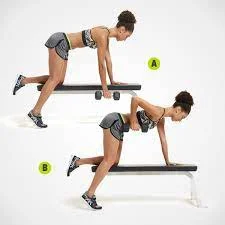
Steps To Follow:
- Put your left hand and knee on the bench. Maintain a straight left elbow.
- With your foot planted firmly on the ground for support, slightly extend your right leg behind you.
- Hold a neutral spine and a flat back.
- Raise your right hand to a medium-to-heavy dumbbell grip while extending your arm to the floor.
- To put your upper arm about in line with your lower chest, bend your right elbow and pull it up and back.
- At the highest point of the exercise, forcefully compress the shoulder blades together.
- With control, reduce the weight.
- After 10 to 12 repetitions on one side, move on to the opposite arm.
- Work with 3 sets maximum.
Standing bent-over lateral raise
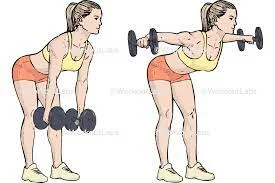
Steps To Follow:
- Hold a pair of dumbbells so that the hands face opposite ways.
- Step your feet shoulder-width apart, bend your knees slightly, and keep your back straight while you slouch forward at the hips.
- Your elbows should be relaxed and the weights should be together beneath your chest.
- Raise your arms until they are parallel to the floor, spreading them out like wings.
- Tense your shoulder blades at the highest point of the workout.
- Return the weights to their starting positions slowly and carefully.
- Light enough weights should allow for 10–12 repetitions. Increase to 2-4 sets.
Cable machine high pull with ropes
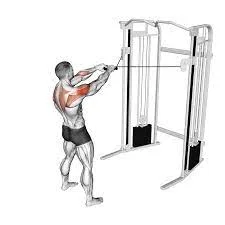
Steps To Follow:
- Position yourself to face the cable machine with your feet hip-width apart.
- Attach the cable’s handle to the cable attachment after adjusting it to approximately chest height.
- Place your feet hip-distance apart and take a step backward so that your arms are extended in front of you.
- The ropes will split apart as you pull them in your direction.
- Maintaining a high elbow position will assist you target those deltoids.
- Stretch your elbows back out to the beginning posture slowly and deliberately.
- A sufficiently light weight should enable 10–12 repetitions. Increase to 2-4 sets.
Rear deltoid machine
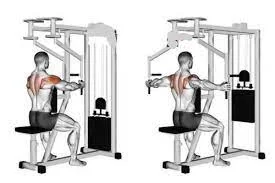
Steps To Follow:
- Regarding the pad, take a seat on the machine.
- For this exercise, you are in the perfect position, even though it will look like you are sitting on it backward.
- For the handlebars in front of you to be level with your shoulders, adjust the seat height.
- With your hands on the handles and your palms facing either way, press your arms back until they are straight or slightly bent.
- As if they were a set of lift doors, squeeze your shoulder blades together.
- Place your hands in front of you and hold this position for two seconds before moving back to the beginning.
- Apply control and slowness to this.
- Perform 10 to 12 repetitions.
Assisted pullup
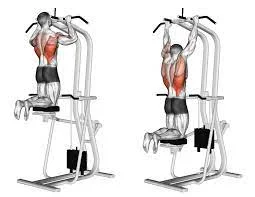
Steps To Follow:
- On the machine’s side, adjust the weight deduction.
- Select the appropriate quantity and set.
- Climb onto the knee pad and push it down once it is low enough for you to rest both knees on.
- You should have hip-width between your knees.
- Grip the outer handles above you, hands facing away from the centre.
- Lower yourself to the beginning position while extending your arms.
- Raise your chin to meet or surpass the handles by pulling your torso upward.
- After a few seconds of holding the pose, carefully lower yourself.
- Maintaining your shoulder blades engaged is important. Press them down and back again.
- Work up to 10–12 repetitions starting with 6–8 reps.
Side-lying external rotation
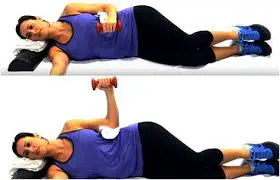
Steps To Follow:
- As lay on your side, grasp a small dumbbell.
- With your elbow bent 90 degrees, place your upper arm on your side.
- If your shoulders are broad, place a towel roll between your upper arm and your torso.
- As much as you can, rotate your arm around your torso while keeping your upper arm fixed to the body.
- Carefully return it to the starting position after holding it for a moment or two. Perform 10 to 12 repetitions.
Conclusion
Dumbbell deltoid workouts are a good way to work on the shoulder muscles and build strength and definition in general. Combining workouts that engage different areas of the deltoids into your program might help make it more comprehensive and balanced.
Recall that reaching your fitness objectives requires a well-rounded exercise program, healthy eating, and enough sleep. Your success will be greatly influenced by your level of consistency and dedication to your workout regimen, regardless of your goals—whether they are to strengthen your muscles, increase their definition, or enhance your general shoulder health.
FAQ
Exercises like shoulder presses, lateral raises, and rear deltoid raises are the most common ways to work the deltoid muscle. To guarantee that the shoulder joint is stable and the muscle is adequately worked, it is crucial to carry out these exercises appropriately.
The Standing Dumbbell Press, Dumbbell Push Press, and Cheat Lateral Raise are the three most effective dumbbell workouts for strengthening the shoulders. If you warm up properly and employ proper technique, these can be used as basic shoulder workouts.
For many, developing the delts is an incredibly difficult muscle group. That being said, most of us have no trouble building our front delts due to all the pressing we perform. Where we have trouble is with the side delts.
Are back delts worked by pushups? Although some shoulder muscles are used during push-ups, the back delts are not worked. The back delts are the focus of all the workouts below. Rows and pullups are excellent choices if you’re searching for compound exercises that target the back delts.
Axillary nerve palsy: The deltoid muscle receives sensation from the axillary nerve. Nerve
compression or damage might result from surgery, a traumatic injury, or misuse of a crutch. Shoulder numbness or weakness may result from these problems, particularly in the area of your deltoid muscle.
References:
- 12 deltoid exercises to tone and strengthen your shoulders. (2023, November 28). TODAY.com. https://www.today.com/health/diet-fitness/best-deltoid-exercises-rcna43495
- Cpt, K. S. (2023, March 10). 6 Exercises to Improve Posterior Deltoid Strength. Healthline. https://www.healthline.com/health/fitness-exercise/rear-delt-exercises


